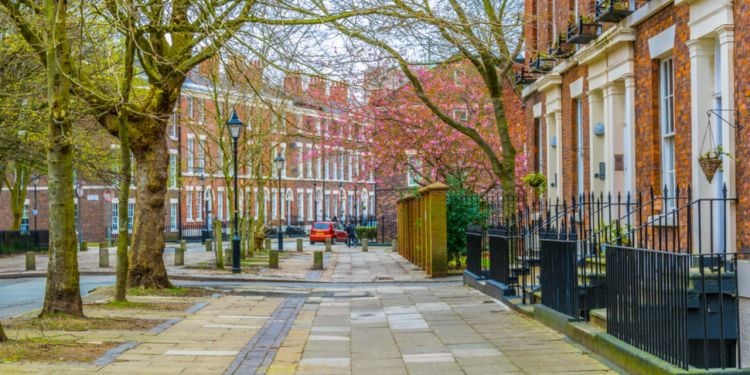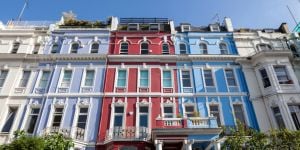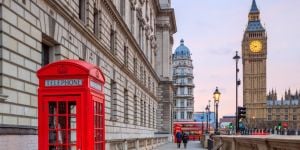
Liverpool is one of the liveliest cities in the United Kingdom, with a vibrant and eclectic lifestyle. Located in the North of England in the Merseyside region, it ranks as the sixth-largest city in the UK. Its population is 475,000, including a large number of expats and immigrants from around the world. Most of them are drawn to this city by its rich cultural heritage, bustling social life, and countless professional opportunities. As a student city, Liverpool also caters to the needs of the younger population.
Exciting things about Liverpool
If your expat journey has taken you to Liverpool, familiarizing yourself with the city's culture is essential before choosing a neighbourhood to live in. First and foremost, Liverpool is diverse and inclusive. The city comprises people from different backgrounds and ethnicities and ensures that all residents contribute to and influence its functioning. You will find Europe's oldest established Chinese community, which arrived in the late 1850s as employees in Liverpool's shipping industry. Liverpool has a thriving Chinese society and its self-sufficient Chinatown — the first in Europe — with Chinese restaurants, supermarkets, and a rich cultural heritage.
Good to know:
Liverpool's Chinese population comprises about 10,000 residents. The city has one of the oldest Black communities in Europe and the oldest in the UK, dating 300 years back when Black people arrived at Liverpool's busy port as sailors, soldiers, and slaves. The Black community in Liverpool is intercultural — people came from the Caribbean, the Americas, and Africa. Lawrence Road has been shaped by immigrants. Paradoxically, on this street, minority ethnic groups make up a substantial majority.
History aficionados will be happy to know they will live in the city with the most national museums and art galleries after London. Under the title National Museums Liverpool, there are seven museums, including the Museum of Liverpool, dedicated to the city's history, the International Slavery Museum, and the World Museum with an aquarium and a planetarium! Also, at Calderstones Park, apart from enjoying quality time in nature (check out the Harthill Botanical Gardens), you can admire the ancient megaliths called The Calder Stones, which are estimated to be older than Stonehenge.
Good to know:
The National Museums Liverpool has around 80,000 artifacts from Egyptian, Greek, and Anglo-Saxon collections.
The best neighbourhoods in Liverpool
Liverpool is divided into several areas, with many parts still undergoing regeneration, so be careful when picking your neighbourhood. Finding accommodation in Liverpool that suits your taste and budget is simple as long as you have the correct information and are ready to plan accordingly.
Liverpool City Centre
Liverpool City Centre is the most popular place to live. The Centre has a bustling social life and offers top-notch apartments and one of the best transportation links in town. Notably, apartments here are cheaper than in other northern cities such as Leeds and Manchester. This neighbourhood is particularly popular with students, professionals, and families.
Liverpool Waterfront
Liverpool Waterfront is a UNESCO World Heritage Site with the popular Pierhead and Albert Dock. It boasts a rich cultural heritage and vibrant nightlife. The area comprises several museums, restaurants, and bars across the docks. You can find various accommodation options here, such as converted factories and spacious storage units, which offer modern-day apartment settings. Rent in this area is higher but still affordable. Most of its inhabitants are young people and professionals. If you are looking for a new and modern apartment, Plaza 1821 is worth checking out.
Crosby
Crosby has an impressive marine lake and miles of sandy shores. Many refer to it as the seaside for city lovers. It also comprises a lot of independent shops and restaurants. Crosby is close to Liverpool City Centre (about half an hour's drive away) and is home to many schools, making it the best choice for families. This area is also popular with professionals and upcoming artists.
Sefton Park
Sefton Park is a green area named after the 235-acre Sefton Park, one of the country's National Heritage sites and hosts a boating lake. The Sefton Park area is home to many good schools and is close to the city centre. You will also find a range of quality shops, eateries, and cafes. However, the cost of living is relatively high compared to other neighbourhoods in Liverpool.
Aigburth
Close to Sefton Park, Aigburth is one of the city's upscale areas with Victorian mansions. It has a bohemian identity and comprises markets, shops, galleries, and top-notch eateries. It is the perfect spot for families, thanks to its excellent schools. If you are an avid traveller, Aigburth is only twenty minutes from Liverpool John Lennon airport.
Types and cost of accommodation in Liverpool
Different types of accommodation are available in Liverpool, from apartments to detached, semi-detached, and terrace houses. It's worth noting that there is a great demand for apartments in this city. Houses are up for rental at pocket-friendly prices, ranking among the lowest in the UK, but the type of accommodation and area brings about variation in rents. According to Numbeo, rent in Liverpool is considered 63% cheaper than in London. Overall, considering the accessibility and culture of the city, it's notable how affordable the housing market in Liverpool is, whether you are a buyer or tenant.
The most expensive area to buy a property in Liverpool is Crosby, which is close to the beach, followed by family-oriented Aigburth. Certainly, the City Centre is a pricier choice, but its value is undeniable given its proximity to essential services, entertainment, educational institutions, and employment prospects.
The average rental costs in Liverpool fluctuate based on the type of property. Prices can begin as low as £419 for a single room, while larger houses with four or more bedrooms can reach rates of £1,310.
If you are looking to buy property in Liverpool, the cost of housing varies, with terraced houses averaging at £148,559, semi-detached houses falling in the middle at approximately £223,116, and detached houses at the higher end, with an average price of £383,511 according to the latest 2022 figures.
Tip:
To find accommodation in Liverpool to rent or buy, search Expat.com's Housing in Liverpool, or post your inquiry at the Liverpool forum.
Student accommodation in Liverpool
Liverpool is home to three universities: the University of Liverpool, Liverpool John Moores, and Liverpool Hope University. In addition, there are three colleges in Liverpool: The City of Liverpool College, Liverpool Institute for Performing Arts, and Knowsley Community College.
The student population of Liverpool's best higher education institution (University of Liverpool) is more than 22,000 students, meaning student accommodation is also rising. Mossley Hill is very popular among students thanks to its shops, cafes, and bars. Also, the suburb is within walking distance of the LJMU campus and the University of Liverpool student halls. Liverpool Hope University in Childwall is a short bus ride away as well. The City Centre is great for students who want to be in the heart of social life. However, it is more costly.
Last, Toxteth (also known as L8) is a better option for students who prefer to share accommodation with fellow students. That is because the area's big terraced houses date back to the 17th century when Toxteth changed from a hunting forest and a Royal Park to an industrial land available for exploitation. In the 1960s, thousands of houses were demolished after being judged as residentially unfit and were replaced by flats, houses, and maisonettes that are now great accommodation options.
Tip:
If you are indecisive, search for accommodation on Smithdown Road. You won't regret living there, especially if you are a student or a solo expat. Residents of Smithdown Road love it for its vibe and numerous dining, entertainment, and shopping options.
During your first year of university, consider opting for a hall of residence on campus. This will help you ease into university life and make friends easily.
Everyday life in Liverpool
Despite being a bustling city, Liverpool has a strong sense of community. The city accommodates its permanent residents and lures thousands of tourists yearly, predominantly due to its heritage as the birthplace of The Beatles. For die-hard Beatles fans, embarking on the Magical Mystery Tour Bus is a top attraction. Also, Liverpool boasts a thriving shopping culture, highlighted by Liverpool ONE, the UK's largest open-air shopping center, and the Red Brick Market, often compared to London's iconic Camden Market, offering a wide array of shopping experiences.
Good to know:
Metquarter shopping mall offers an upmarket shopping experience. If you feel it's too posh for you or aren't into brands, you can visit it for the cinema and the food hall.
Liverpool is served by Merseyrail. If you live and work in Liverpool, consider buying the Merseyrail Only Railpass to make your journeys cheaper. On weekends, you can leave Liverpool and head to close-by Manchester City, less than an hour away on the train, which runs until just before midnight. The Liverpool John Lennon Airport is an international airport within the city of Liverpool, which makes your regional and international travels easier. Liverpool has several trustworthy and expert hospitals offering first-class NHS care. These include the Royal Liverpool and Broadgreen University Hospitals, Aintree University Hospital, and Liverpool Women's NHS Foundation Trust, a significant obstetrics, gynecology, and neonatology research hospital.
Useful links:
We do our best to provide accurate and up to date information. However, if you have noticed any inaccuracies in this article, please let us know in the comments section below.












Comments